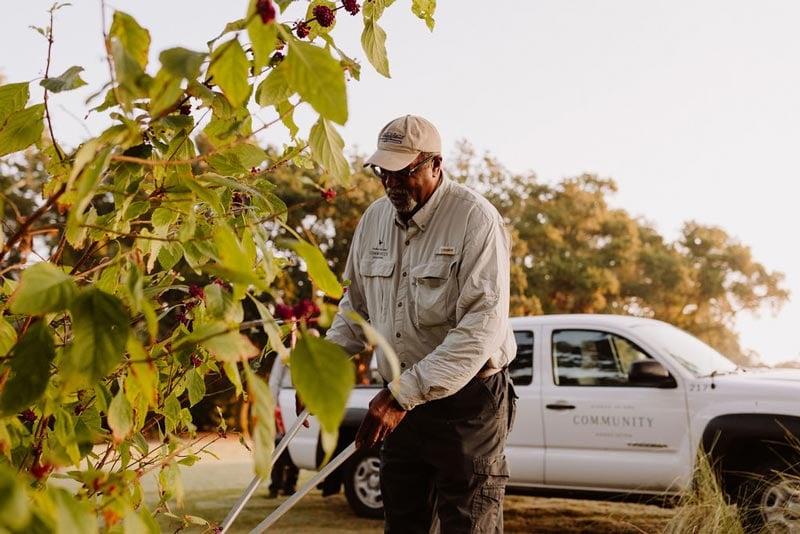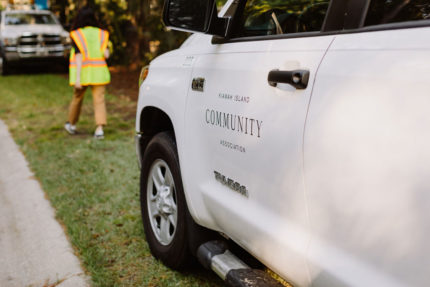Sep
13
2008
From The Blog
Then And Now: KICA Comes Of Age – Part 2
This summer, two island entities are celebrating 20-year anniversaries. June marked 20 years since Kiawah Resort Associates (KRA) purchased Kiawah from the original developers, the Kuwait Investment Company (KIC); and in September the Town of Kiawah Island (TOKI) commemorated 20 years since its incorporation. Digest looks back at the growth of the Kiawah Island Community Association (KICA) over those 20 years.
Part two of this series discusses Bob Cowan, the first full-time manager of KICA, as an agent of change; start-up issues of trust and communication between the association and its members; KICA jumps into the social and recreational scene; and changing demographics today in association membership.
Bob Cowan, Change Agent
Bob Cowan oversaw ten years of rapid change on Kiawah and in the community association. He has the kind of mechanical aptitude that most people can only envy. “I grew up doing different things, and it just came naturally,” he explains. “I learned by trial and error.” After working as director of engineering and maintenance for Six Flags Over Georgia, and then spending five years at Callaway Gardens in Georgia, he came to Seabrook Island in 1978 to handle their “horizontal construction” — roads, a golf course, tennis courts, erosion control and such. He had been executive director of the Seabrook Property Owners Association for more than five years when KRA hired him to be KICA’s first full-time manager. His self-taught mechanical skills were soon to be sorely tested.
Bob was due to sign his contract and start work on Monday, September 25, 1989. On Thursday night, September 21-22, Hurricane Hugo struck the Charleston area. Most of the Kiawah leaders were in London arranging for the Ryder Cup. “I wasn’t signed up yet, but I assumed I was in charge,” Bob recalls, “and I just took over on Friday morning.”
Most of Bob’s first year was devoted to cleanup, construction and managing work crews. The Kiawah management entities — the town, resort, developer and community association — clearly understood their separate responsibilities, but all worked closely together. For a while, key people from each group met every morning to apprise each other of what they were doing. Bob is still in awe of the community effort. He notes that when the association board levied an assessment to pay for the work, most people sent the money in less than 45 days, a response he calls “unheard of.” He continues, “The cleanup process was quite a chore, because people were cleaning their own yards and piling debris on the side of the roads. We were hauling thousands of truckloads of timber off the island and burning debris as fast as we could. Everyone worked so hard; you would never have believed that what we did could be done.”
The Town of Kiawah Island (TOKI) had incorporated a year before Hugo, largely because Charleston Mayor Joe Riley had been annexing land contiguous to Charleston, and Kiawah people were worried that the island would be next. TOKI was the controlling governmental entity that interfaced with the National Guard and other towns, and helped KICA by forming committees of volunteers who manned the phones and handled property inspections and communication with non-resident members. Bill and Ann Connellee, who hadretired to Kiawah in 1987 and moved into their new house in 1988, thought annexation unlikely and were not initially in favor of the incorporation. But Ann recognizes that the town efforts vastly improved the clean-up process. “Had we not had the town,” she reminisces, “the developers would have had to take everything into their own hands, and it would have been overwhelming. The town made all the difference for the volunteer effort, because it gave us a structure we would not have had otherwise.”
An extensive restoration effort followed the clean-up, including repair of the drainage systems, general repairs, repaving and landscaping.KICA planted 1,300 trees on roadways and common property. Bob brought a portion of the KICA landscaping function in-house right away “to care for the landscaping that we had just spent millions on, so we would not waste that money.”
After a year, Bob was able to “refocus myself and begin to reorganize the entire property owner system.” Security was fully in-house by then, and he had hired a full time director of security. Now, beginning with landscape maintenance, with which he was dissatisfied, he began bringing other departments in-house. After another year or so, he hired biologist Norm Shea to head the lakes management department, of which he is still the capable director.
Bob’s other major challenge was financial management. Although the Kuwaitis had handled all the community association functions, they had charged the association for expenses without bringing in sufficient funding. A major repair project just before their sale of Kiawah left the association with a debt of $250,000. By cutting waste, trimming expenses, hiring good people to perform functions in-house, transferring community property from KRA to KICA by legal accounting maneuvers rather than cash sales, and instituting a series of revenue-generating fees, Bob managed to retire leaving KICA with a reserve fund of $8 million—an amount that has grown to $10 million today.
Issues of Trust and Communication
In their last few years, the Kuwaitis had not seemed to be interested in smooth communication with members. In addition to leaving KICA deeply in debt, they destroyed records before departing and had failed to answer member inquiries or provide information. Chuck and Gloria Pollis were among the first small handful of Kiawah residents in 1976. Chuck recalls that the Kuwaitis’ interest began to wane around 1984, as a result of “a change in some of the tax laws that affected villas and second homes. The Kuwaitis weren’t getting what they expected out of Kiawah any more and they made a decision to move on. They didn’t communicate well, if at all, and the situation became we/they.”
The Kuwaitis created a tense atmosphere of dissension and distrust, which KICA and KRA had to work hard to dispel. The battle was often uphill. The association board was controlled by KRA, who held four of the seven directorships. Some members were gun-shy, suspicious of KRA’s motives and viewing KICA as a puppet of KRA. “Some people wanted more control over KRA decisions,” Chuck recalls. “After their experience with the Kuwaitis, members wanted more involvement with island governance. Some thought that even the member directors on the association board were just friends of the developers and would support them.” Ann and Bill Connellee agree.
Bill recalls, “The developers were trying to sell property, and they wanted to plant a lot of flowers and put up fancy signs. Opponents were angered that they were paying [through the community
association]. But anything they did to sell property helped the island. The opposition was good in some ways because the developers realized they needed better communication.”
KICA staff understood the need to improve relationships with members. “It was important to us to help build trust and establish credibility with members,” KICA Executive Director Tammy McAdory says, “so they would have a level of comfort that we were really there for them.” And Bill Connellee thinks the KICA has succeeded. “Of course now, things are quite smooth and not much happens that people object to. All the facilities are lovely,” he claims.
Social and Recreational Activities
One area in which KIC had excelled was providing social events for residents. They believed that this would help to sell real estate. As a result, according to the Connellees and Chuck Pollis, “everyone knew everyone else.” The only members’ recreational facility was the property owners’ pool with a small, rudimentary building (at the site of today’s pool and the Sandcastle). In 1978, KIC hired Gloria Pollis to organize the original Kiawah Island Club, precursor to the Governors Club, which provided members with low-cost golf and tennis and an array of social activities. At first, nearly every property owner belonged. Gloria scheduled major parties around all the holidays and the annual meeting, as a tie-in for non-residents.
When the Kuwaiti interest in Kiawah began to wane, Gloria’s social budget shrank, and KRA did not restore it. Chuck states, “That’s when a members’ center became a bigger issue. It became obvious that we needed a facility to hold parties, do crafts, do all the things that are now offered by the Sandcastle. It needed to be done by the community association, rather than the developer.”
Today, the recently revamped Sandcastle is a popular facility providing space for fitness, social and educational events, workshops, meetings, clubs, reading, high-speed internet, and display of member artwork, with a full staff to run it. The pool has been enlarged, the bathhouse renovated, and a large snack bar added. The recent strategic plan lists a number of additional recreational and facilities needs for a maturing community association.
Freshfields has also enhanced the social and recreational scene, providing a place for people to congregate informally, a variety of cultural programs, and shopping options. Ann Connellee remembers the long drives to a grocery store—and the fact that at least the drive wasn’t bad because “most times you never saw a car on Bohicket Road.”
Changing Demographics
The need for increased membership facilities are a reflection of the demographic changes on Kiawah in the last 20 years. The proportion of families residing here full time has remained about 20 percent during that time, but the number has grown. The 450-500 full-time resident families today is roughly the total membership number in 1988, and the total membership now is 4,000 properties with 7,200 members. Furthermore, first-time purchasers of property are about 10 years younger than in 1988. Wealth is another shift in the Kiawah population. Most long-time residents and staff view exposure from the Ryder Cup golf tournament in 1991 as the single most important factor in accelerated development and increased property values on Kiawah.
Bob Cowan says, “New members began to expect more services and quicker responses, and fortunately, KICA had the money to provide that.” He credits the KRA sales department under Pat McKinney for much of the success, noting that a nicer island created higher prices which brought wealthier people—“more doctors and lawyers and professional people, and more Indian chiefs.” He believes that the technology stock market of the late 1990s fueled some of the change. “A lot of people who made millions overnight began to look
for classier resorts.”
In one key measure, Kiawah has not changed. Owning property on Kiawah is, and always has been, a good investment. Bob concludes, “I never heard of anyone selling a piece of property who lost money on it.”

